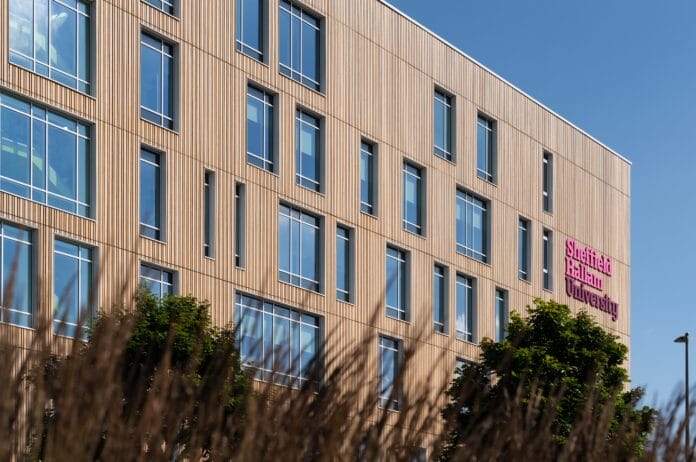
The world around us is changing rapidly, the environments we live, and work in are under increasing pressure to deliver places that are adaptable, safe and have a positive impact on our health and wellbeing.
Last week saw the Healthy City Design Conference bring together public health professionals, scientists, urban planners, architects, and policymakers to share ideas on ‘designing healthy, resilient cities’ in the face of far-reaching, life-changing threats.
Whether these threats are the climate emergency or a global pandemic, the environments we create must be designed to be resilient in the face of both immediate and future change, and positively impact those that are living here.
A key driver in the future design of our cities is health and wellbeing – both physical and mental. We know that good design can make people happier, healthier and more fulfilled in their everyday lives and having led the design of the recently completed Advanced Wellbeing Research Centre (AWRC) in Sheffield, we have seen first-hand the importance of pushing the boundaries of innovation, to make that even more accessible, now and with the future in mind.
This project is set out to provide state-of-the-art indoor and outdoor research laboratories for academic experts across the fields of health, engineering, robotics, software design and psychology to codesign innovations to help people ‘move more’, to not only treat but also help prevent chronic diseases.
The focus of the AWRC is on research and innovation to prevent disease and supporting people into 100 years of healthy and active life; to explore the management and treatment of chronic disease through physical activity as a therapy; and the development and application of new and emerging technologies to help people move – ultimately improving the health and wellbeing of the population through these innovations.
We embraced this ethos and challenge and developed a design that has movement, health and wellbeing at its core. Adding in feature staircases, cycle storage and biophilic design to create a healthy and nature-connected environment for the building users, on what is a fairly urban site. Spaces were also designed to be flexible and adapt as technology advances and building use changes.
The AWRC is the next step in the evolution of a Life Sciences Opportunity Zone, with a mission to prevent and treat chronic disease through word-class research into physical activity. Encouraging this through the making of public realm that is accessible for pedestrians and cyclists, greening spaces – embraced by Sheffield’s ongoing grey to green scheme, bringing water management and biodiversity into the heart of the City.
This will mean re-engineering movement back into our lives, requiring a radical re-think in the way we live, work, manage and monitor our health, and travel around our towns and cities.
By bringing together academic expertise from across Sheffield Hallam University within this world-class facility, and creating meaningful partnerships with industry, local communities, local authorities and the health and technology sector, the AWRC will address the social, behavioural and economic determinants of health, creating equitable and active communities for all.
This is particularly relevant as the world emerges from the Coronavirus pandemic, the AWRC will play a leading role in changing and supporting the behaviours of the general public, taking the lead in working collaboratively with academics, the NHS and private sector.
By embedding social value in every aspect of our design we can create places that encourage connection between people of all ages and abilities not just for now but in the future.

